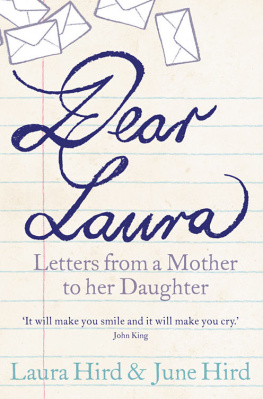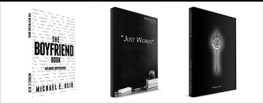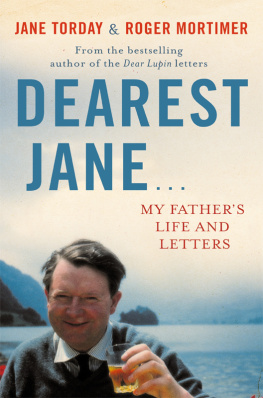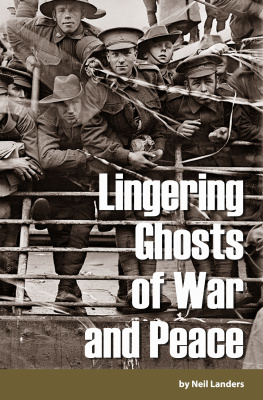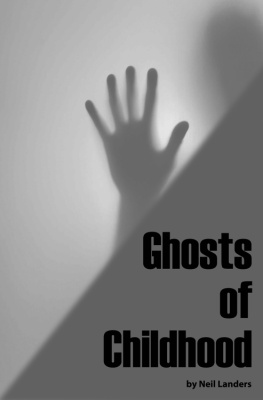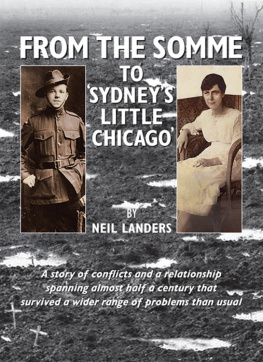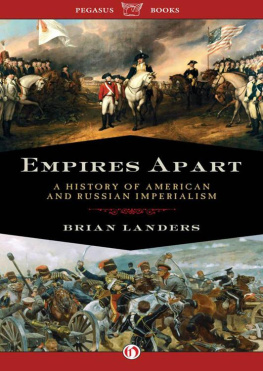Copyright 2003 by Margo Howard
All rights reserved.
Warner Books, Inc.
Hachette Book Group
237 Park Avenue
New York, NY 10017
Visit our website at www.HachetteBookGroup.com.
First eBook Edition: October 2009
ISBN: 978-0-446-56871-5
Praise for
Ann Landers in Her Own Words

Eloquentmemorablefascinating.
Sioux City Journal
Landers comes across as a gutsy dynamoDevoted readers will want to dip intothis account.
Booklist
Heartfelt, funny, and remarkably revealing.
U.S. News & World Report
Shows just who Eppie was[Her] thoughts are dispensed with a good dose of humor, an uncondescending directness, and, often, a wink.
Newsday
The letters are a time machine to breakfast tables past, where that good-girl advice was delivered with a zing all its own.
New York Times
Also by Margo Howard
Eppie: The Story of Ann Landers (1982)
To the memory of my mother,
and
to the man who gave her such joy at the end of her life,
my beloved Ron her son-in-law, the doctor.
One authors name appears on the cover, but no one writes a book alone. I offer my thanks
to Larry Kirshbaum, who wanted this book, edited it, and as fate would have it, knew my mother when we were all much younger. And to Molly Chehak, Larrys talented sidekick.
to Bob Barnett, for his expertise and guidance.
to Lynn Martin, for Bob Barnett.
to Kathleen Ryan, for listening to me.
to Daniel Smith, allegedly my assistant, but in reality, my twenty-five-year-old bossand a gifted one, at that.
to Corby Kummer, for Daniel Smith. (As well as being an astute first reader.)
to everyone at Warner Books who made this all manageable.
to Mark Feeney and Alex Beam, who badgered me to do a book. Any book.
to Kathy Mitchell, for helping me remember, and for helping me, period.
to the writer girlfriends, Kitty Kelley, Jodie Allen, Judy Bachrach, and Carol Muske-Dukes, who gave me confidence, pep talks, and friendship.
And to the doctor, whose approach to me during the writing of this book was somewhere between gracious and saintly.
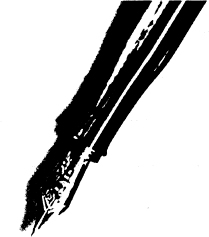
My mother wrote this book. It took her forty-four years.
The letters in this book relate her side of an ongoing correspondence begun when I was eighteen and ended, upon her death, when I was sixty-two. Saving these letters since I was in college has been an unconscious act for which I have no explanation. It is the one area of my life where Ive exhibited packrat-ism. The only reason I can think of is that the letters were just too good to part with. They were loving and tough and funny and gossipy and of course filled with advice during any time of turmoil.
It dawned on me only in the mid-1980s that I was amassing an ongoing written record of my mothers thoughts. By then, Id been living away from Chicagoand hersince 1977, when a new marriage took me to California. I never returned to Chicago. In 1991, I moved to Cambridge, Massachusetts, where I lived for the balance of her life, and where I live still.
In addition to the letters occasioned by my living away from her, there was voluminous correspondence from her frequent travels. Mother loved pleasure trips and had friends everywhere. Her work-related travel was to build the Ann Landers nameto make speeches and meet editors. In this way she developed professional friendships across the country. When she died I was not surprised to hear from now-elderly editors and publishers, young themselves when Mother was just starting to write in 1955, at the age of thirty-seven.
For whatever reason, my mother had what amounted to a compulsion to stay in touch with me: to report on her life, remark on mine, discuss family matters, or just describe the passing scene. And being Eppie, it was some scene. Her influence, interests, and personality provided her with entre to an eclectic group of accomplished and important people. And, of course, she corresponded with them.
Letter writing for Mother was never a chore; it was a joy, as well as a way to strengthen friendships. A note, a clipping, a this reminded me of you, were the means by which she could reinforce a new relationship with people who interested her. Mother was known for being well connected, and letters were one way of maintaining the connection. Perhaps it is in the genes, because I, too, am a mad sender of notes and clippings. It is not work at all, but rather a way to express the feeling of friendship.
This collection of letters bespeaks different things, one of which is the bond between us. It was strong and we were extremely close. I had no siblings and my mother was heavily invested in me, emotionally. As I understand my early years, I was an appealing child in looks and intelligencethings that mattered to her. I was an attention getter as a little girl, with golden ringlets, creamy skin, and precocious verbal skills. Mother swore my first words were a sentence: How are you feeling, Mr. A.B.? (A.B. was her beloved father.) Perhaps more than some mothers, she felt that my persona reflected on her. And in a way, I was also a replacement for the heretofore primary relative in her life: her identical twin sister, Pauline, or Popo to the family. (It was she who was to follow my mother into the advice business as Dear Abby.) First unconsciously, then deliberately, Mother refocused her attachment from her twin to her child. It was a choice she made not long after my birth and one from which she would never deviate.
Putting aside the fact that ours was a mother-daughter relationship that worked, perhaps the foremost factor distinguishing letters from this particular mother is that letters were her art form. Her life, literally, was about letters. Though an engaging and piquant conversationalist, the essence of Mothers personality was to be found in her correspondence. Stylistically conversational, her written communications used unvarnished, distinctive, vivid languageand a great deal of humor. Her feel for letters was no doubt refined by the sheer volume of mail she handled. Unlike other people who were faithful correspondents, Mother received huge amounts of mail, daily, from people she didnt know. And these she answered in newspapers around the world.
One thing my mother and I held in common, as writers, was the ability to write as we speak. This informality made her letters like a conversation that happened to be articulated through typewriter keys, a pencil, or a pen. And the look of her letters was, let us say, distinctive. When she wrote to me it was seldom on engraved stationeryunless it was a thank-you note for a gift. About these she was quite formal. Mostly, though, she typed on yellow copy paper, a newsroom staple. To dash off a short note, she would use the small, square notepads with her photo and the Sun-Times logo, later the Chicago Tribunesher two home papers during a forty-seven-year newspaper career. At the bottom of these notepads was printed Ann Landers, which she always crossed out and substituted Mother or Nonno. We were wild with nicknames in our family. Some of mine, given me by my father, were a spin on Margo: I was Mugs, Mugsy, J. Fred (inspired by J. Fred Muggs, Dave Garroways chimp on the early


